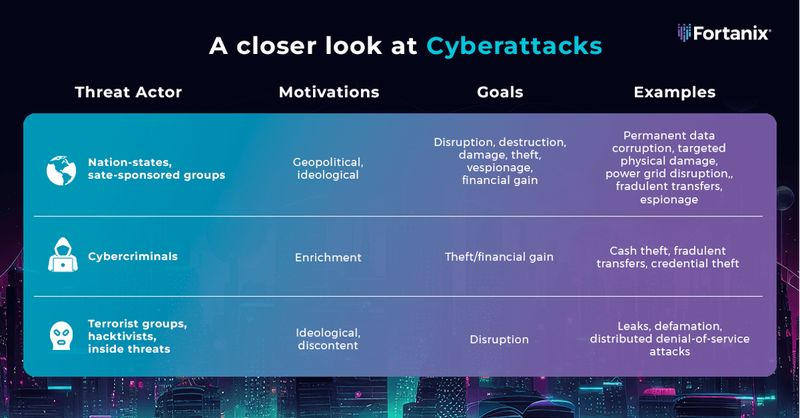Prepending Cybersecurity: Outsmarting the Next Cyberattack
The digital landscape is a battlefield. Every day, sophisticated cyberattacks threaten businesses, governments, and individuals, seeking to steal data, disrupt operations, and cause financial ruin. Traditional cybersecurity, often reactive, struggles to keep pace. Prepending cybersecurity, a proactive approach focusing on anticipating and preventing attacks before they can occur, offers a more robust defense. This article dives deep into the concept of prepending cybersecurity, exploring its principles, benefits, and how it can help you outsmart the next cyberattack.
Understanding the Shift: From Reactive to Proactive
Traditional cybersecurity often relies on reacting to threats after they’ve already breached defenses. This reactive model, while crucial, can be likened to treating a disease after it’s already taken hold. Prepending cybersecurity, on the other hand, emphasizes a preventative approach, akin to preventative medicine. It shifts the focus to:
- Proactive Threat Intelligence: Gathering and analyzing information about potential threats before they materialize.
- Vulnerability Management: Identifying and addressing weaknesses in systems and infrastructure before they can be exploited.
- Security by Design: Incorporating security considerations into every stage of development and deployment, rather than adding them as an afterthought.
The Core Principles of Prepending Cybersecurity
Prepending cybersecurity is built upon several key principles designed to bolster your defenses and stay ahead of evolving threats:
- Threat Modeling: Identifying potential attack vectors and understanding how attackers might exploit them. This allows for the proactive implementation of security controls.
- Continuous Monitoring and Assessment: Constantly monitoring systems, networks, and applications for vulnerabilities and suspicious activity. This includes regular penetration testing and vulnerability scanning.
- Automation and Orchestration: Automating security tasks, such as threat detection, incident response, and vulnerability remediation, to improve efficiency and speed up response times.
- Zero Trust Architecture: Assuming no user or device can be trusted by default, requiring strict verification for every access request. This minimizes the impact of a potential breach.
- Employee Training and Awareness: Educating employees about cybersecurity threats and best practices to reduce the risk of human error, a common attack vector.
Benefits of Embracing Prepending Cybersecurity
Implementing a prepending cybersecurity strategy offers a multitude of benefits:
- Reduced Risk: Proactive measures significantly reduce the likelihood of successful cyberattacks.
- Lower Costs: Preventing attacks is far less expensive than responding to and recovering from a breach.
- Improved Business Continuity: Minimizing downtime and ensuring business operations continue even in the face of threats.
- Enhanced Reputation: Demonstrating a commitment to cybersecurity builds trust with customers and stakeholders.
- Faster Incident Response: Automated tools and pre-planned responses streamline incident management, minimizing damage.
- Adaptability: Prepending cybersecurity allows organizations to adapt more quickly to emerging threats.
Implementing a Prepending Cybersecurity Strategy: A Step-by-Step Guide
Transitioning to a prepending cybersecurity model requires a strategic and phased approach:
- Assess Your Current Security Posture: Identify existing vulnerabilities and weaknesses. Conduct a thorough audit of your systems, networks, and applications.
- Develop a Threat Model: Analyze potential threats and attack vectors relevant to your organization.
- Prioritize Vulnerability Remediation: Address the most critical vulnerabilities first, based on their potential impact and likelihood of exploitation.
- Implement Security Controls: Deploy appropriate security controls, such as firewalls, intrusion detection systems, endpoint detection and response (EDR) solutions, and multi-factor authentication (MFA).
- Automate Security Tasks: Integrate automation tools for tasks like threat detection, incident response, and vulnerability scanning.
- Establish Continuous Monitoring: Implement a robust monitoring system to detect and respond to threats in real-time.
- Train Your Employees: Educate employees about cybersecurity threats, best practices, and their role in maintaining a secure environment.
- Regularly Review and Update: Continuously evaluate and update your cybersecurity strategy to address emerging threats and evolving business needs.
The Future of Cybersecurity: Staying Ahead of the Curve
The cyber threat landscape is constantly evolving. Staying ahead of the curve requires a proactive and adaptable approach. Prepending cybersecurity is not a one-time fix but an ongoing process of:
- Staying Informed: Continuously monitoring threat intelligence feeds and staying abreast of the latest cyber threats and attack techniques.
- Investing in Advanced Technologies: Exploring and implementing advanced security technologies, such as artificial intelligence (AI) and machine learning (ML), to enhance threat detection and response capabilities.
- Collaboration and Information Sharing: Participating in industry collaborations and sharing information with other organizations to collectively improve cybersecurity defenses.
Conclusion: Building a Resilient Defense
Prepending cybersecurity represents a paradigm shift in how we approach digital security. By proactively anticipating and preventing cyberattacks, organizations can significantly reduce their risk, protect their assets, and build a more resilient defense. Embracing a prepending approach, with its emphasis on threat intelligence, vulnerability management, and security by design, is essential for outsmarting the next cyberattack and safeguarding the future of your business.
FAQs
1. What is the difference between reactive and proactive cybersecurity?
Reactive cybersecurity responds to threats after they have occurred. Proactive cybersecurity, or prepending cybersecurity, focuses on anticipating and preventing attacks before they happen.
2. How can AI and ML be used in prepending cybersecurity?
AI and ML can automate threat detection, identify anomalies, predict future attacks, and improve incident response times, making cybersecurity more proactive and efficient.
3. Is prepending cybersecurity more expensive than reactive cybersecurity?
While there may be initial investment costs, prepending cybersecurity is generally more cost-effective in the long run because it reduces the likelihood and impact of costly breaches.
4. How often should I review my cybersecurity strategy?
You should regularly review your cybersecurity strategy, at least annually, and whenever significant changes occur in your business or the threat landscape.
5. What are some common tools used in prepending cybersecurity?
Common tools include threat intelligence platforms, vulnerability scanners, penetration testing tools, security information and event management (SIEM) systems, and endpoint detection and response (EDR) solutions.




